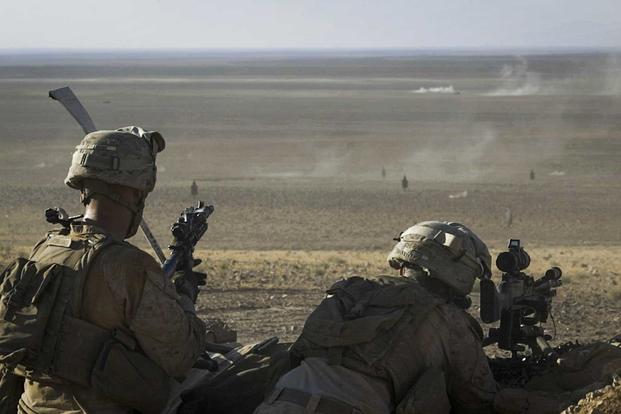To prevent the resurgence of the Islamic State, several hundred U.S. troops will stay in Syria indefinitely, split between the northeast and the existing U.S. base at Al-Tanf near the Jordanian border, Pentagon officials said Friday afternoon. A senior administration official confirmed to multiple news outlets Friday that the total number was about 400.
"We will maintain our presence at Al-Tanf," which is seen as a buffer against Iranian threats, and also maintain an "observation and monitoring force" in the northeast, said Navy Cmdr. Sean Robertson, a Pentagon spokesman.
In the interim, the withdrawal of the rest of the estimated 2,000 U.S. troops currently in Syria will continue "in a deliberate manner," but there is no timetable for the pullout, he said.
The details of the continuing American presence in Syria have yet to be worked out, but there are indications that the U.S. intends to create a safe zone in the northeast, aimed at protecting the U.S.-partnered and mostly Kurdish Syrian Democratic Forces, who have borne the brunt of the fighting against the Islamic State.
The statements from the Pentagon amount to a reversal of President Donald Trump's surprise announcement Dec. 19 that all U.S. troops in Syria would be withdrawn. Then-Defense Secretary Jim Mattis resigned the next day.
Friday at the Pentagon, Joint Chiefs Chairman Gen. Joseph Dunford said the decision to keep a U.S. troop contingent in Syria is "about campaign continuity."
He said the military "always had planned to transition into a stabilization phase" as the ISIS threat diminished, in which "we train local forces to provide security to prevent the regeneration of ISIS."
"So, there's no change in the basic campaign; the resourcing is being adjusted because the threat has been changed," Dunford said.
Robertson said later that the Defense Department's mission "hasn't changed. We're there for the enduring defeat of ISIS."
The first indication that the U.S. would maintain a troop presence in Syria, despite Trump's earlier call for a complete withdrawal, came in a one-sentence email statement Thursday night from White House Press Secretary Sarah Sanders: "A small peacekeeping group of about 200 will remain in Syria for a period of time," Sanders wrote.
Friday on "Fox & Friends," Sanders said, "At the end of the day, the president wants to bring our troops home, and he is working toward that. And he wants to do that in a safe and peaceful way, in the best way possible, to make sure we have complete safety for our troops abroad."
Pentagon officials said Friday that the number of troops would be about 400 and that the decision to keep them there had come from the White House, although Army Gen. Joseph Votel, head of U.S. Central Command, is believed to have argued for maintaining a presence.
In testimony to the Senate Armed Services Committee last month, Votel stressed that ISIS would retain an ability to mount new attacks even after its last stronghold near the Iraqi border was eliminated.
France and Britain are the only two U.S. allies who also have a small troop presence in Syria. Their governments have said that those troops will not remain if the U.S. goes ahead with a complete pullout. It was not immediately clear whether the French and British contingents will remain now that the U.S. presence will continue.
-- Richard Sisk can be reached at Richard.Sisk@Military.com.












